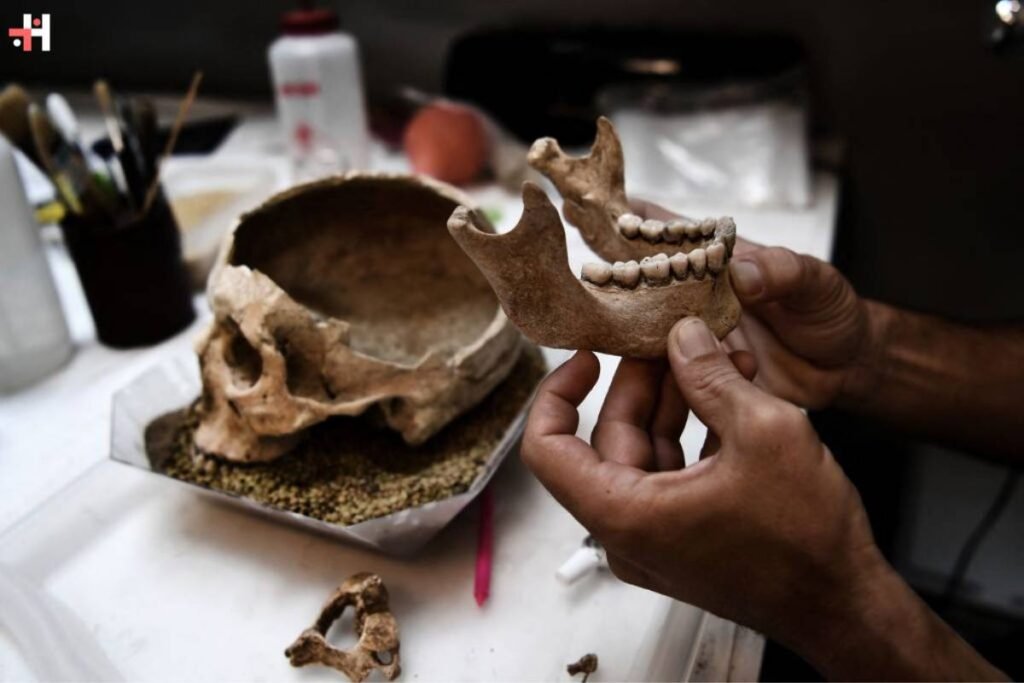For centuries, the origin story of syphilis, a sexually transmitted infection that ravaged 15th-century Europe and remains prevalent today, has been shrouded in confusion. Finger-pointing across continents fueled speculation, with accusations bouncing between the “French disease,” the “Neapolitan disease,” and countless variations based on geography. But new research using ancient DNA paints a more intricate picture, one where the lines between Europe and the Americas become blurred.
Unraveling the Past: Fossil Clues of an Ancient Foe
Traditionally, the Columbian hypothesis held sway, attributing the European syphilis epidemic to Christopher Columbus’ voyages from the New World. Now, a study published in Nature throws a wrench in this long-held theory. By analyzing 2,000-year-old bones from Brazil, researchers unearthed the earliest known genomic evidence of Treponema pallidum, the bacterium responsible for syphilis and two related diseases. This discovery predates Columbus’ transatlantic journeys by millennia, casting doubt on the simple narrative of European contagion.
Paleopathology: This field, dedicated to studying ancient pathogens preserved in bones and other relics, unlocks doors to forgotten illnesses. The Brazilian bones, some bearing telltale marks of T. pallidum’s destructive appetite, offered invaluable clues. Genetic analysis of four samples revealed a lineage closest to the modern subspecies causing bejel, a non-sexually transmitted disease with similar symptoms found in parts of Africa and the Middle East.
A Complex Puzzle with Missing Pieces
Syphilis, a complex disease caused by an equally intricate bacterium, has long held researchers at bay. Cultivating T. pallidum in a lab remained a challenge until 2017, hampering in-depth study. This, coupled with the historical stigma surrounding the disease, contributed to gaps in our understanding.
“It’s very clear that Europeans brought diseases like smallpox to the New World, so the idea of the New World ‘giving syphilis to Europe’ was attractive to some,” remarked Sheila Lukehart, an infectious disease expert not involved in the study. However, the new findings strengthen the possibility of pre-Columbian treponemal infections in the Americas, suggesting the bacterium’s presence far before Columbus set sail.
Beyond Columbus: A Deeper Family Tree
While challenging the Columbian hypothesis, the Brazilian discovery doesn’t conclusively rule it out. A previous study by the same team detected T. pallidum in European remains predating Columbus, hinting at some form of treponemal disease already circulating on the continent.
Furthermore, the ancient Brazilian genome unveiled a bacterial family tree stretching back 12,000 years, suggesting an even earlier origin for T. pallidum’s human association. Verena Schünemann, the lead author, speculates that the bacteria could have arrived in the Americas with the continent’s first inhabitants migrating from Asia.
“The story is much more complex than the Columbian hypothesis could have imagined,” Schünemann emphasizes. This complexity is echoed by Mathew Beale, a bacterial genomics expert, who points out that the recovered strain in Brazil isn’t a direct ancestor of modern syphilis. This leaves open the possibility of diverse treponematoses, related but distinct diseases, being present in both hemispheres before Columbus.
The Elusive Truth: Ancient DNA Holds the Key
Unraveling the true origins of syphilis and its global distribution requires further research, particularly across historical samples from different continents. Lukehart believes analyzing ancient DNA from Europe and the Americas could solve the riddle, revealing which subspecies were present before Columbus’ voyages.
As Beale concludes, “The modern tools available for extracting DNA from ancient samples… has rapidly increased our understanding of Treponema.” This quest for knowledge, fueled by advancements in paleopathology and genomics, may finally bring clarity to the murky past of syphilis, replacing speculation with the intricate tapestry woven by ancient DNA.










